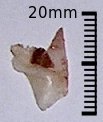This article needs more reliable medical references for verification or relies too heavily on primary sources. (January 2014) |  |




Surgical treatments of ingrown toenails include a number of different options. If conservative treatment of a minor ingrown toenail does not succeed or if the ingrown toenail is severe, surgical management by a podiatrist is recommended.[1] The initial surgical approach is typically a partial avulsion of the nail plate known as a wedge resection or a complete removal of the toenail.[1] If the ingrown toenail recurs despite this treatment, destruction of the germinal matrix with phenol is recommended.[1] As an alternative, one may use 10% sodium hydroxide which is less toxic[2] or trichloroacetic acid which may give faster healing time.[3] Antibiotics are not needed if surgery is performed.
- ^ a b c Heidelbaugh JJ, Lee, H (Feb 15, 2009). "Management of the ingrown toenail". American Family Physician. 79 (4): 303–8. PMID 19235497.
- ^ Ozdemir E, Bostanci, S, Ermekci, P, Gurgey, E (2004). "Chemical matricectomy with 10% sodium hydroxide for the treatment of ingrowing toenails". Dermatologic Surgery. 30 (1): 26–31. doi:10.1111/j.1524-4725.2004.30004.x. PMID 14692922. S2CID 25965276.
- ^ Ramesh S, Shenoi, SD, Nayak, SUK (2020). "Comparative Efficacy of 10% Sodium Hydroxide, 88% Phenol, and 90% Trichloroacetic Acid as Chemical Cauterants for Partial Matricectomy in the Management of Great Toe Nail Onychocryptosis". J Cutan Aesthet Surg. 13 (4): 314–8. doi:10.4103/JCAS.JCAS_183_19. PMC 8061653. PMID 33911412.